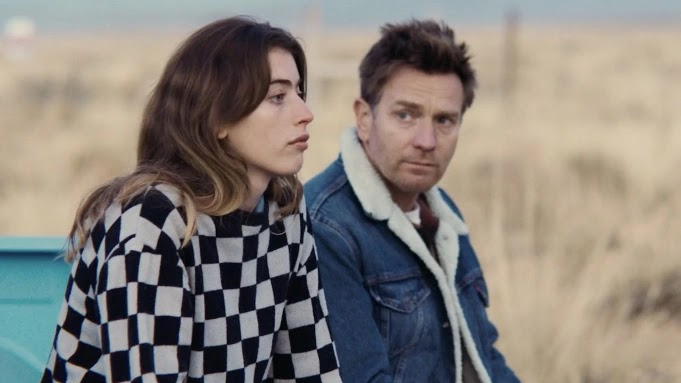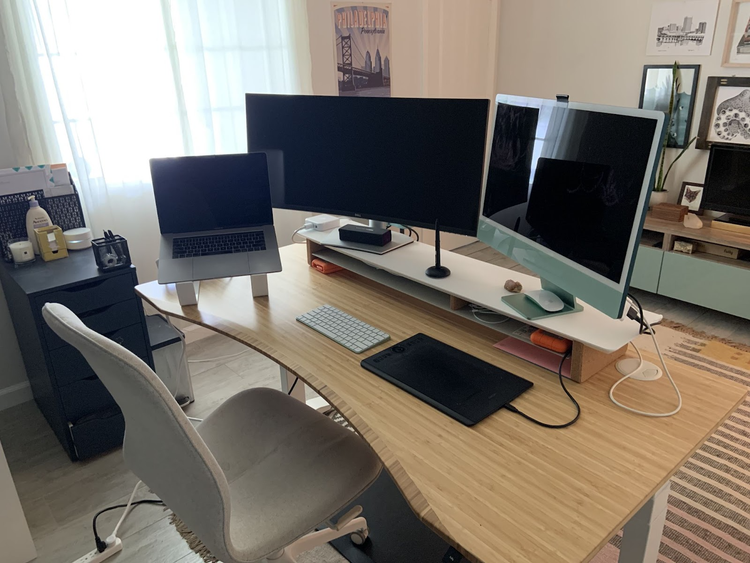Exploring mental health themes in a father-daughter drama: Editing You Sing Loud, I Sing Louder using Premiere Pro

Image source: You Sing Loud, I Sing Louder Still.
Among one of the films that premiered at SXSW this year, You Sing Loud, I Sing Louder is a drama that follows the story of an estranged father and daughter (starring real life father and daughter Ewan McGregor and Clara McGregor) attempting to mend their relationship. Exploring topics of mental health and family dynamics, You Sing Loud, I Sing Louder is a deeply emotional and thought-provoking film edited by Autumn Dea who selected Premiere Pro to bring the emotional film to life.
“I chose to edit this project in Premiere Pro because I find that creative editing is easier to do in this NLE. Using time remapping tools, audio filters, color correction tools and different effects was a big part of this project, so it made sense to use Premiere Pro,” shared Dea.
While Frame.io was not used for this particular project, Autumn regularly incorporates the software into her editing workflow, especially when she needs to be able to import feedback into Premiere Pro. Given her extensive knowledge of Adobe’s Creative Cloud tools, we spoke with Dea to hear about her productive use of the tools. See below to hear how she’s using Premiere Pro and Frame.io to assist with her creative filmmaking process.
How and where did you first learn to edit?
I first learned how to edit in high school. I was fortunate enough to go to a school that offered a video production class, and I learned how to edit when I was around 15-16 years old.
How do you begin a project/set up your workspace?
I’m a really organized editor, so I like to begin my process by having all of my footage/dailies organized and renamed by scene and take number. I also color code each clip based on the act number. For example, the entire first act might be labeled pink, the second act green, and the third act blue. I’m a visual person, so even though it takes up a lot of time at the beginning of the project, it makes the rest of the editing process go a lot quicker.
Tell us about a favorite scene or moment from this project and why it stands out to you.
There are so many scenes in this film that I love, it’s hard to choose just one! From an editing standpoint, my favorite scenes are the ones that dip between reality and surrealism. I don’t want to give anything away, but some of the more visceral moments where our lead actress, Clara, is disassociating from life are my favorite. Those scenes allow me to depart from traditional editing and take more risks. That type of editing is more feeling based than anything else, and that’s always a lot of fun to tackle as an editor.
What were some specific post-production challenges you faced that were unique to your project? How did you go about solving them?
Every project has its challenges during post. For this one, the challenges were mainly about the overall structure of the film. We have moments of mental disassociation integrated into the film in the form of flashbacks and figuring out how and where to utilize them was probably the biggest challenge. The director, Emma Westenberg, and I spent a lot of time moving these scenes around in the film. As we did this, we’d ask people with fresh eyes to come watch the film and give feedback. Ultimately, I’m really happy with where and how the scenes landed in the film.
What Adobe tools did you use on this project and why did you originally choose them? Why were they the best choice for this project?
I used Adobe Premiere Pro to edit this film. I chose to edit this project in Premiere Pro because I find that creative editing is easier to do in this NLE. Using time remapping tools, audio filters, color correction tools and different effects was a big part of this project, so it made sense to use Premiere Pro.
Do you use Frame.io as part of your workflow? If so, how do you use it why did you choose it?
Although we didn’t use Frame.io for this project, I use the software regularly. I love Frame.io because it’s not only a great tool to share work, but it’s also a great tool to receive and share feedback. When it comes to feedback, I like being able to see the exact moment that’s being discussed, rather than receiving a sometimes inaccurate timecode written in an email. I also like that I can respond to comments and mark them as complete as I address them. My favorite feature is the ability to import the feedback into Premiere Pro. Not having to go back and forth between editing and looking at notes has streamlined my process completely.
If you could share one tip about Premiere Pro, what would it be?
One feature that I love about Premiere Pro is that you can stack your timelines. A lot of times when I’m editing, I’ll have them stacked, and I can easily drag and drop clips from one timeline to another. For example, I’ll have my master timeline with my current edit open, as well as the timeline with my selects for a scene open. This allows me to easily screen my selects and pull the moments that I want into my master timeline.
Who is your creative inspiration and why?
That’s a great question. I’m not sure that I have a single person that’s my creative inspiration. I’m a very observant and curious person, so I’m often inspired by the things and people around me. I also really love watching films and tv shows for inspiration. For me, there’s nothing as inspiring as seeing an incredible film/show. Additionally, I really admire editors like Joi McMillon, Margaret Sixel, Spencer Averick, Nat Sanders, Terilyn A. Shropshire and Doug Pray.
What’s the toughest thing you’ve had to face in your career and how did you overcome it? What advice do you have for aspiring filmmakers or content creators?
The film industry is a tough industry to break into. Postproduction can be especially difficult as there’s typically only one editor on a project. At the beginning of my career, getting the opportunity to edit a feature film was by far my biggest challenge. For aspiring editors and people in the creative field, I’d say don’t be afraid to hustle. Someone once told me, “It’s either for the meal or for the reel”, and I took that seriously. I’d work on projects I wasn’t super passionate about to pay my bills, and at night I’d work on projects that were super low budget but would be good for my reel and/or would be a good connection to foster. I’d also cold email emerging directors and production companies to try and find opportunities.
Share a photo of where you work. What’s your favorite thing about your workspace and why?
I love my curved monitor! It’s huge, so when I’m editing I have ample room for my timeline. It makes editing feature films and longer projects much easier.

Workspace of editor Autumn Dea.